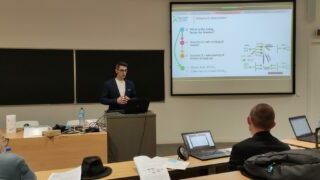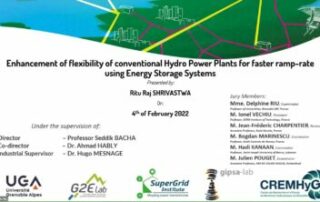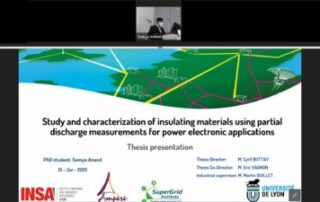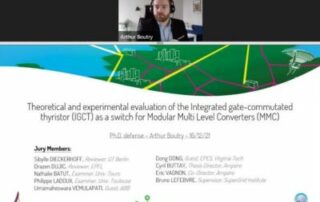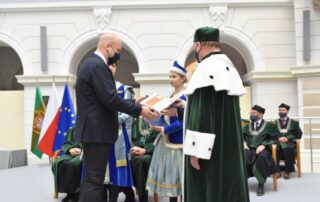Our news
PhD Shafie REZAYI: “System Integration of hybrid DCCB technologies into selective protection strategies”
The objectives of the thesis is to identify the main challenges of applying fully selective FCS in HVDC grid.
SuperGrid Institute acts alongside Greater Lyon for the future of industry
SuperGrid Institute is committed to transforming industry and protecting the environment by signing the Greater Lyon manifesto.
PhD Ritu-Raj Shrivastwa: “Enhancement of flexibility of conventional Hydro Power Plants for faster ramp-rate using Energy Storage Systems”
Hydro power plants can be the most prominent solution as they are both renewable & capable of following the load demand by controlling its output.
Spotlight on SuperGrid Institute’s PhDs concluding in 2022
The following PhD students are nearing the end of their research and will be presenting their final theses over the course of 2022.
PhD Somya Anand: “Study and characterization of insulating material using partial discharge measurements for power electronic applications in HVDC and MVDC”
This thesis aims to investigate the partial discharge mechanism under square voltage waveform to address power electronic applications.
PhD Arthur Boutry: “Theoretical and experimental evaluation of the Integrated gatecommutated thyristor (IGCT) as a switch for Modular Multi Level Converters (MMC)”
This manuscript investigates the potential of Integrated Gate-Commutated Thyristors (IGCT) for Modular Multi-Level Converters (MMC).
Piotr Dworakowski, winner of the Siemens Award Contest
Piotr Dworakowski is the winner of the Siemens Award Contest for his thesis on the modelling and analysis of medium frequency transformers!
1st prize in the Young Researchers Contest at Jicable HVDC’21
Maya Mourad, one of our research engineers, received the 1st prize in the Young Researchers Contest at Jicable HVDC’21!
SuperGrid Institute’s “Stage Dating” 2021
SuperGrid Institute’s “Stage Dating” 2021 [...]
PhD Rayane Mourouvin: “Converter control in a power system with high penetration of renewable energy”
This work focuses on the transmission grid level and investigates the control of VSCs interfacing renewable sources in hybrid power systems where PE and SG coexist.


